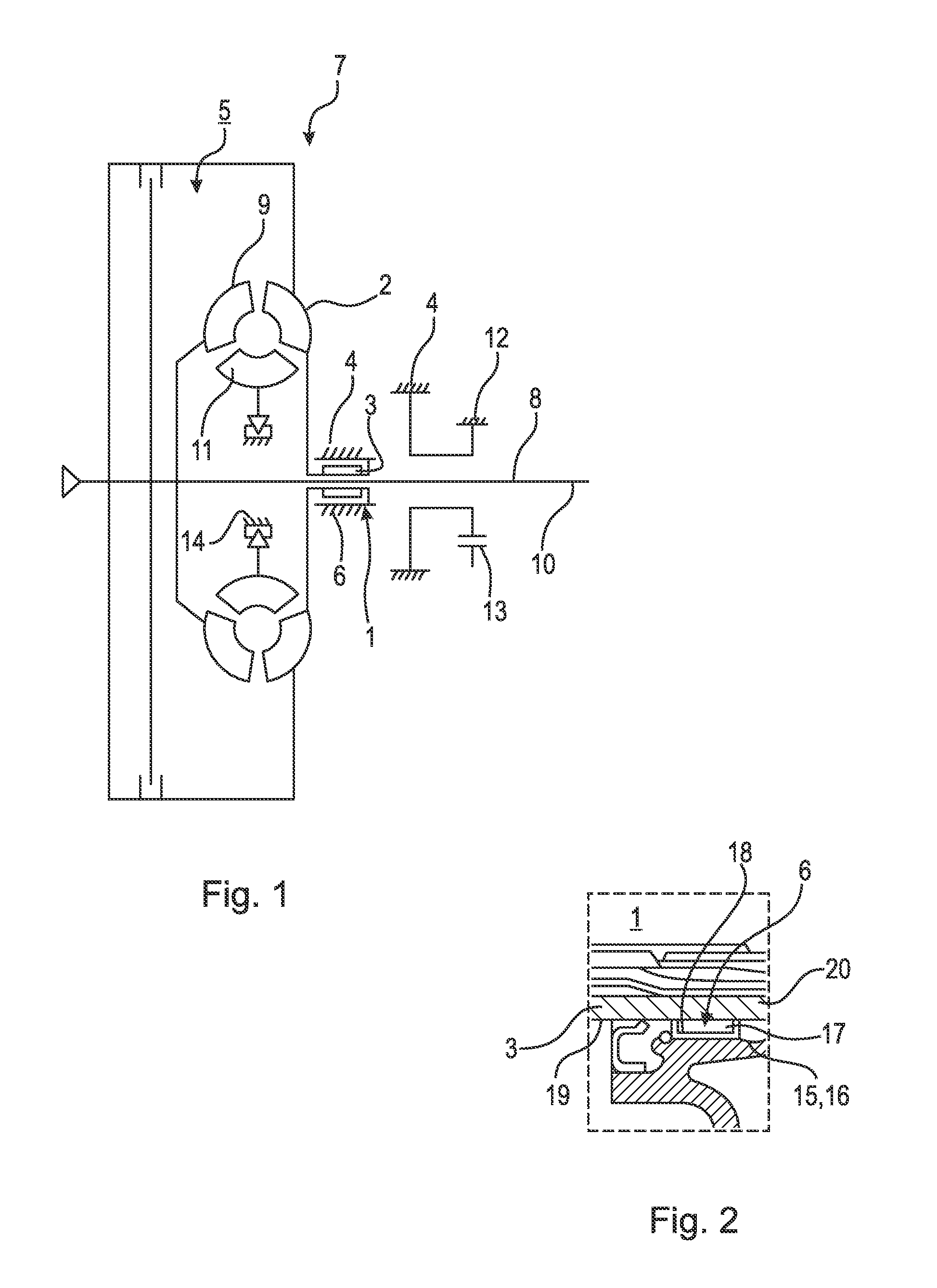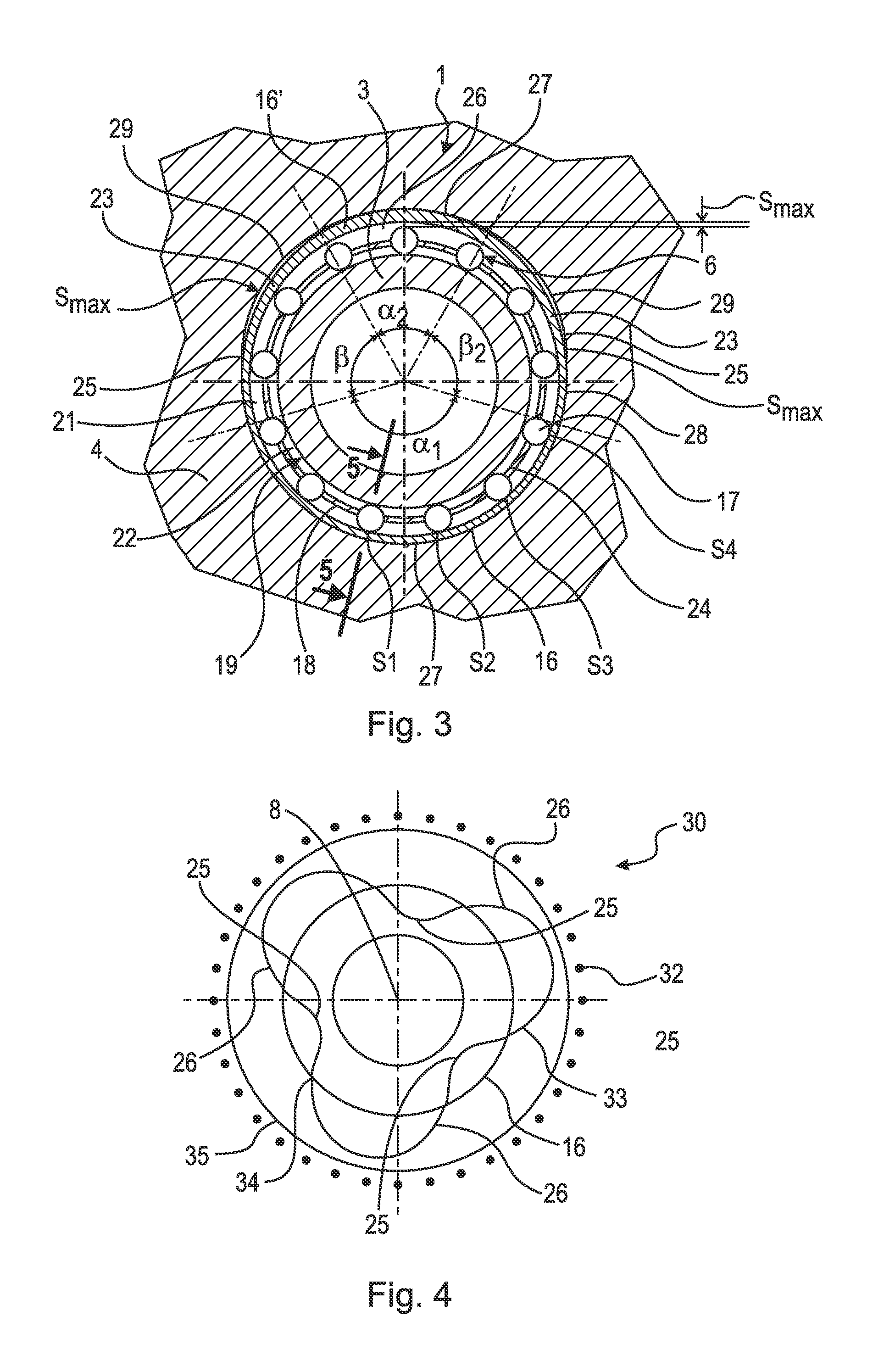Converter collar bearing for a torque converter
a technology of torque converter and bearing, which is applied in the direction of bearings, roller bearings, shafts, etc., can solve the problems of disadvantageous bearing positions of rolling bearings for mounting the converter neck, and the generation of noise of disadvantageous bearing positions, so as to avoid rattling noises
- Summary
- Abstract
- Description
- Claims
- Application Information
AI Technical Summary
Benefits of technology
Problems solved by technology
Method used
Image
Examples
Embodiment Construction
[0029]FIG. 1 shows in a highly simplified schematic form a transmission 7 with a bearing position 1 for rotatably mounting a pump impeller 2 on a housing 4. The pump impeller 2 of a torque converter 5 is connected to a converter neck 3. The converter neck 3 is mounted in the housing 4 by means of least one roller bearing 6 in such a way that said converter neck can rotate about the axis of rotation 8 of the pump impeller 2. The housing 4, is for example, a housing 4 of a primary pump (not shown in detail), by means of which the torque converter 5 and the transmission 7 are supplied with hydraulic fluid. The axis of rotation 8 of the pump impeller 2 is also the axis of rotation 8 of a turbine impeller 9, the axis of rotation of an input shaft 10 of the transmission and the axis of rotation of a stator impeller 11. The turbine impeller 9 of the torque converter 5 is connected to the transmission input shaft 10 of the transmission 7, which is connected to the torque converter 5. This i...
PUM
| Property | Measurement | Unit |
|---|---|---|
| diameter | aaaaa | aaaaa |
| diameter | aaaaa | aaaaa |
| full angle | aaaaa | aaaaa |
Abstract
Description
Claims
Application Information
 Login to View More
Login to View More - R&D
- Intellectual Property
- Life Sciences
- Materials
- Tech Scout
- Unparalleled Data Quality
- Higher Quality Content
- 60% Fewer Hallucinations
Browse by: Latest US Patents, China's latest patents, Technical Efficacy Thesaurus, Application Domain, Technology Topic, Popular Technical Reports.
© 2025 PatSnap. All rights reserved.Legal|Privacy policy|Modern Slavery Act Transparency Statement|Sitemap|About US| Contact US: help@patsnap.com



